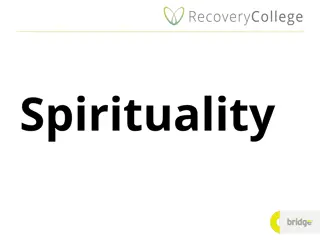Glimpses of India's Freedom Movement Through Key Figures and Events
Explore significant figures like Raja Ram Mohan Roy, key events like the introduction of English education, and oppressive policies during the Indian freedom movement portrayed through images and descriptions. Dive into the social practices, sufferings of common people, and reforms aiming for societal change. Test your knowledge through exercises and multiple-choice questions on the historical context.
Download Presentation

Please find below an Image/Link to download the presentation.
The content on the website is provided AS IS for your information and personal use only. It may not be sold, licensed, or shared on other websites without obtaining consent from the author. Download presentation by click this link. If you encounter any issues during the download, it is possible that the publisher has removed the file from their server.
E N D
Presentation Transcript
Glimpses of the Past MODULE 2 From Our Freedom Movement S D SAWANT
4.Raja Ram Mohan Roy(1772-1833) Ram learned man from Bengal, tried to reform society. He taught people that the main precepts of all religions same. He emphasized the practical and scientific use of knowledge. He went to England. He reminded the British that rulers too had duty towards subjects. He newspapers suspicious British stopped them in 1823. Mohan Roy , a the were the their started but the
5. Oppression(1765-1835) In 1818, a resolution was passed. Under it an Indian could be jailed without trial in a court. The British officers drew large salaries. made fortunes in business. By 1829, exporting British worth seven crores rupees to India. The British Governor General of India, Bentinck reported to England the bones of cotton weavers are bleaching the plains of India. Thus the British prospered on the ruins of Indian industry. They Britain was Lord William Bentinck goods
6. Dissatisfaction (1835-56) 2. In 1835, Lord Macaulay suggested that the medium of education in India should be English. The aim was to produce an army of clerks to assist Incidentally, produced a new generation of intellectuals. Some of them tried to educate the masses. Some decided to convey the grievances of the people to the British Parliament. the British. also it Lord Macaulay
Exercise for Practise (II) 1. Name these people (i). Name the ruler who fought pitched battles against the British and died fighting. (ii). The person who wanted to reform the society. (iii). The person who recommended the introduction of English education in India
Exercise for Practise (III) Mention the following : (i). Two examples of social practices prevailing then. (ii). Two oppressive policies of the British. (iii). Two ways in which common people suffered.
Multiple Choice Questions 1. Ram Mohan Roy, a learned man from Bengal tried to ____________ (i). Reform our society (ii). Started newspapers (iii). Both (i) and (ii) 2. Who quote these words cows are of different colours, but the colour of their milk is same. Same way the essence of every religion is the same. (i). Macaulay (ii). Bentinck (iii). Ram Mohan Roy
3. Regulation III means: (i). Any Indian could be jailed without a trial in a court (ii). British goods imported to India were to be duty free. (iii). Equal salary to be given to Indians and British soldiers alike. 4. The first Governor General of India was (i). Macaulay (ii). William Bentinck (iii). Dalhousie
5. English educationwas introduced in India by _____ (i). Macaulay (ii). Lord Cripp (iii). Dalhousie 6. By 1856, the British had conquered _________ (i). The whole of India (ii). Eastern part of India (iii). Western part of India






















